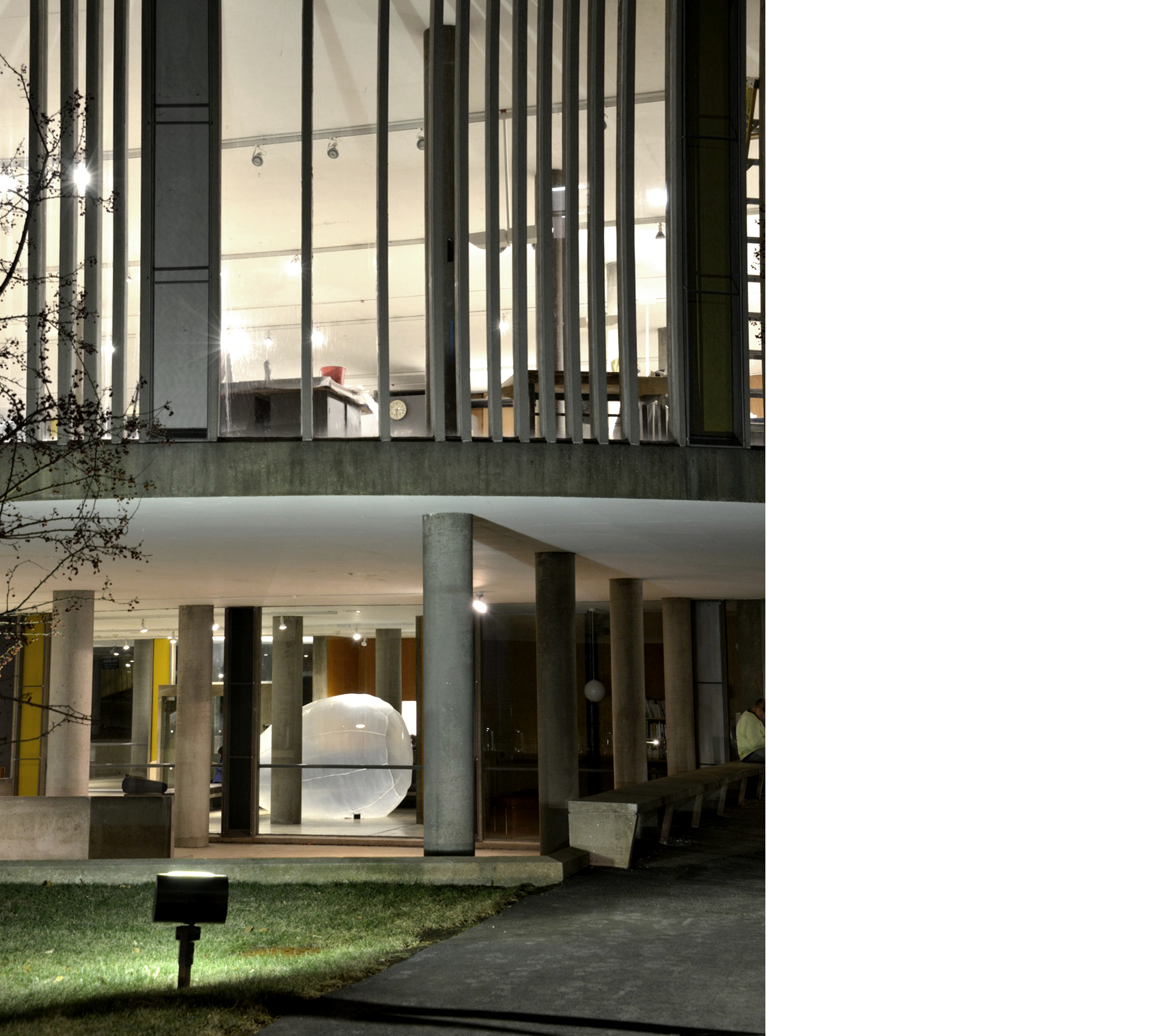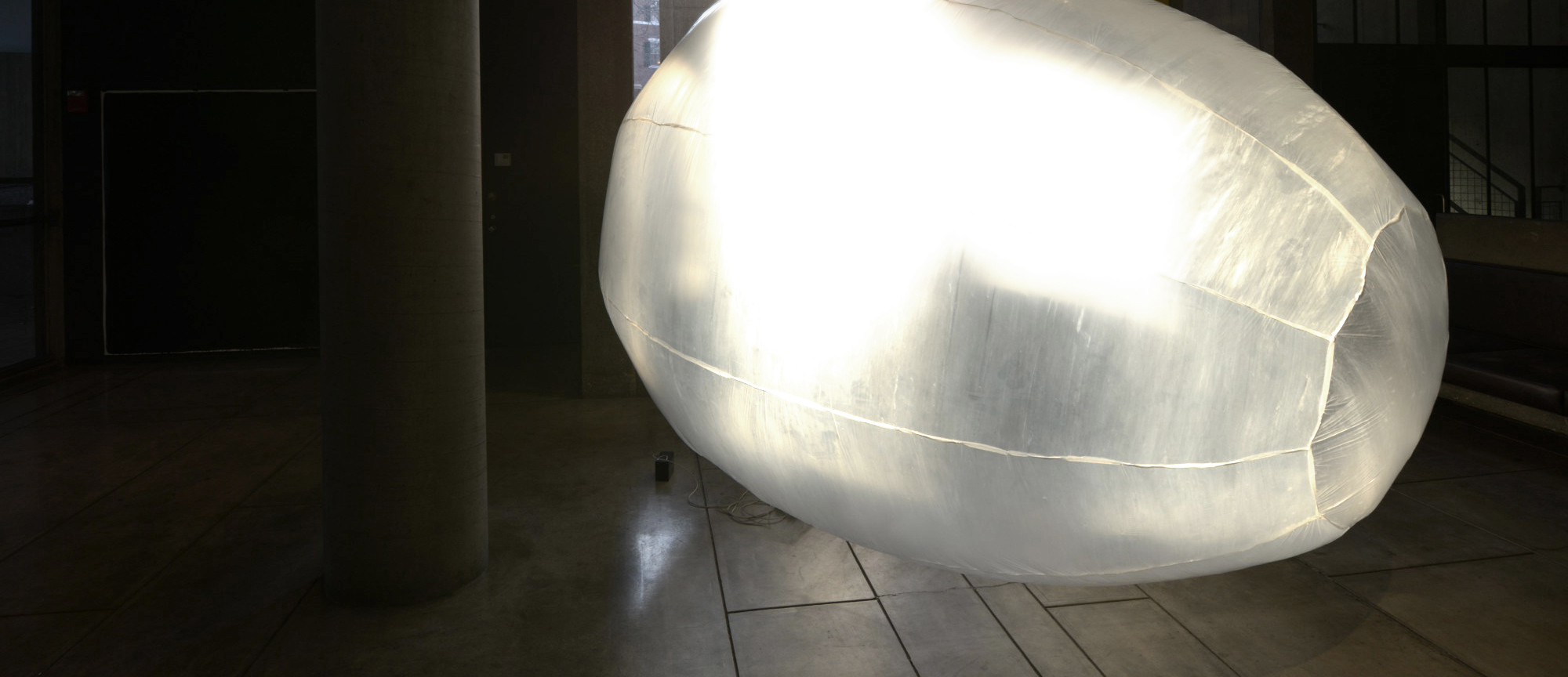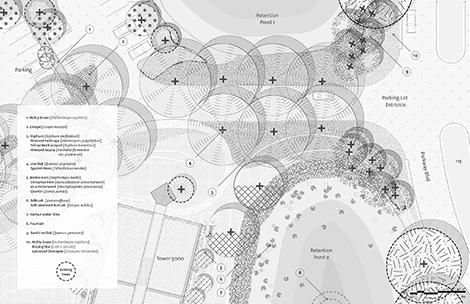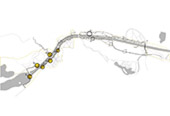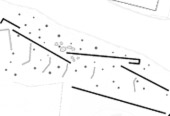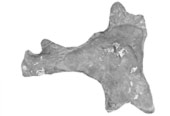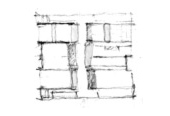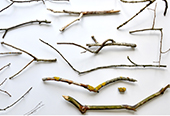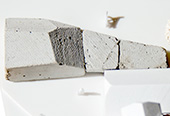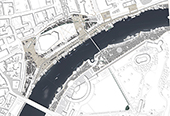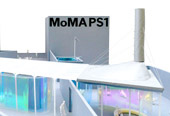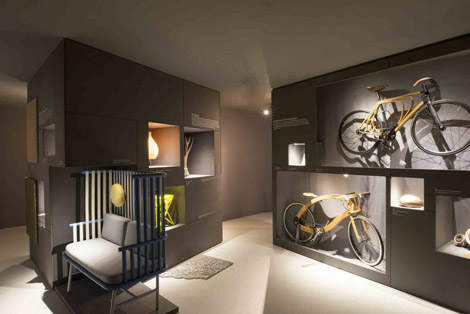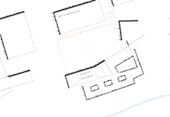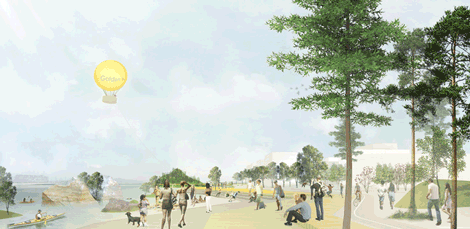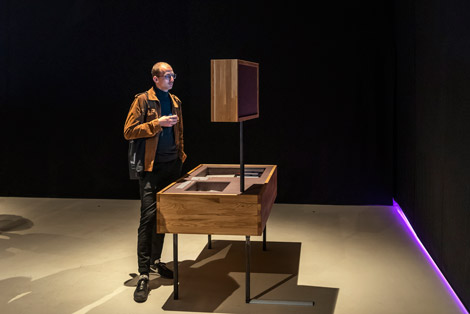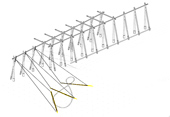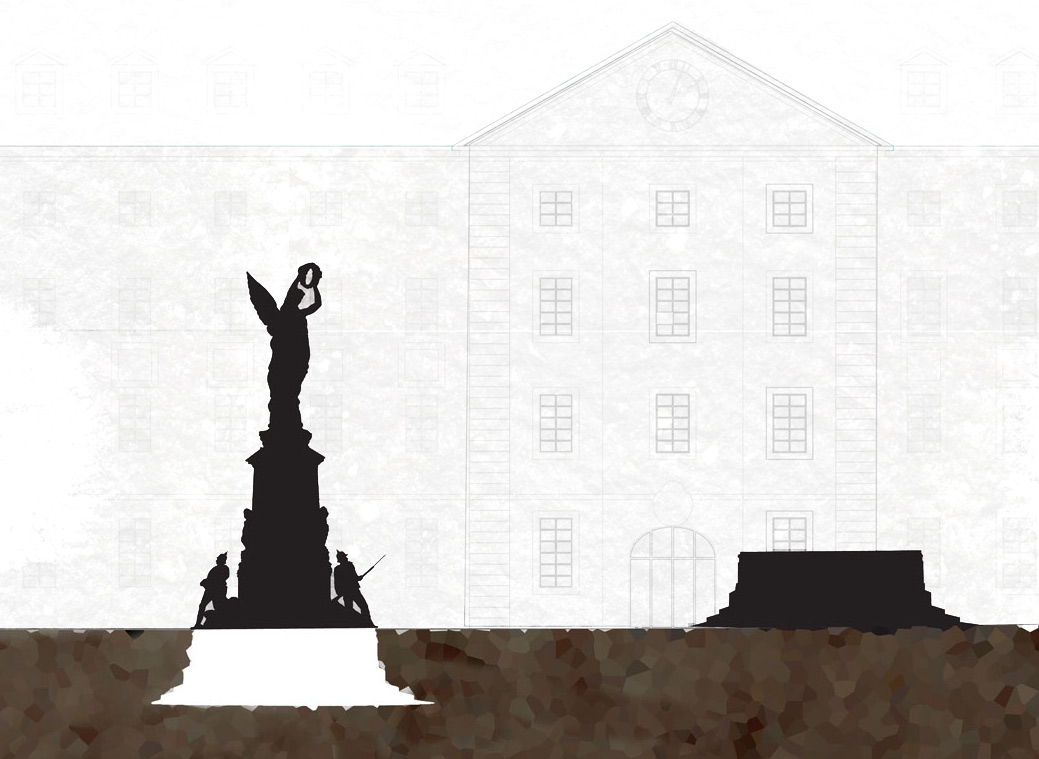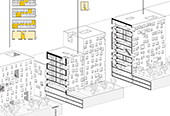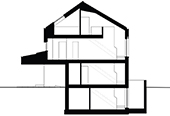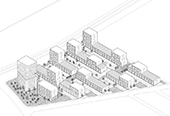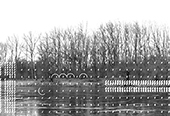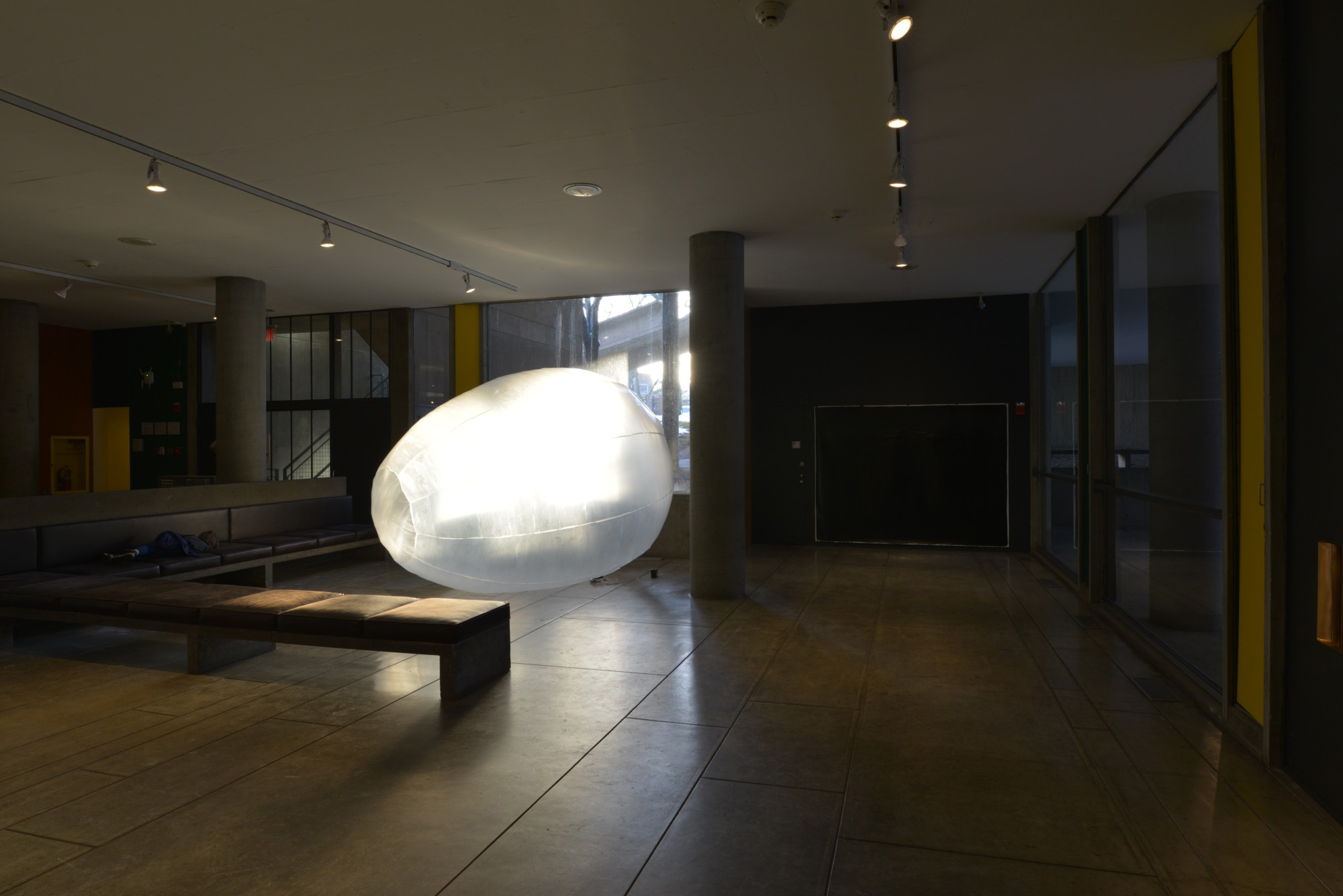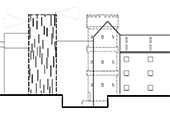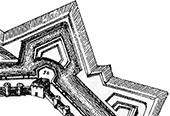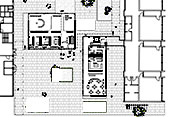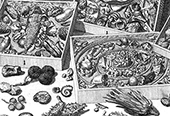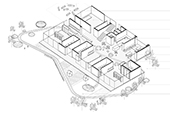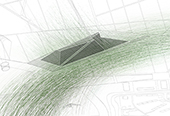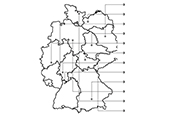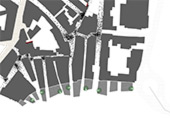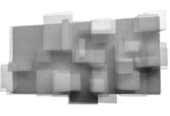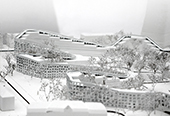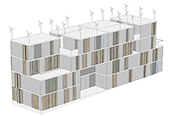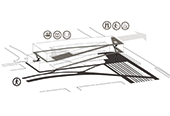the space we enact
der Raum den wir erfüllen
Pneuma(tic) Bodies
Installation-Performance, Carpenter Center for the Visual Arts (CCVA), Cambridge, USA, 2016
Pneuma(tic) Bodies ist eine Installation von Skulpturen und Skizzen, die die Beziehung des menschlichen Körpers zum Objekt erforscht und einen architektonischen Raum durch das umhüllende Medium Luft schafft. Drei große ballonartige Formen aus dünnem Kunststoff besetzen größere visuelle und physische Bereiche des Carpenter-Centers Level 1. Die Objekte werden von kleinen Ventilatoren, die in PC`s zu finden sind, kontinuierlich mit Luft beblasen. Die Bewegung und der Maßtab für “life–like globular” Formen unterbrechen die starren architekturalen Schemas “Modulor”. Ein ideeles System von Proportionen des Menschen in seinem gebautem Umfeld. Zusätzlich zur Skulptur, der großen Zeichnung auf Papier, zeigen die Potential der Weite eines menschlichen Körpers. Der Entwurf animiert zur Reflektierung an die Durchlässigkeit und die Instabilität des menschlichen Körpers, oft geführt von schwankenden Bewegungen und macht gleichzeitig die normalerweise nicht feststellbaren folgen unserer Bewegung durch architektonische Sphären sichtbar.
Pneuma(tic) Bodies is an installation of sculptures and drawings that explores the relationship shared by the human body, objects, and architectural space through the enveloping medium of air. Three large balloon–like forms made of thin plastic material occupy considerable visual and physical areas on Level 1 of the Carpenter Center. The objects continuously inflate via small cooling ventilators typically used to regulate temperature in personal computers. The motion and scale of these life–like globular forms interrupt the rigid architectural schema designed by Le Corbusier with his concept of the “Modulor,” an ideal system of proportions relating the human body and the architectural environment. In addition to sculptures, large–scale drawings on paper expose the scale and reach of the human body in changing grades of darkness and shininess. This installation encourages reflection on the permeable and unstable qualities of the human form, often guided by fluctuating currents, while making visible the usually undetectable consequences of our movement through architectural space.
Original Artwork by Alexander Häusler
Collaboration:
Jill Johnson (Dancer, Director of Dance Program, Harvard University), Hans Tutschku (Musician, Fanny P. Mason Professor of Music at Harvard University)
Above photo by Stephanie Mitchell
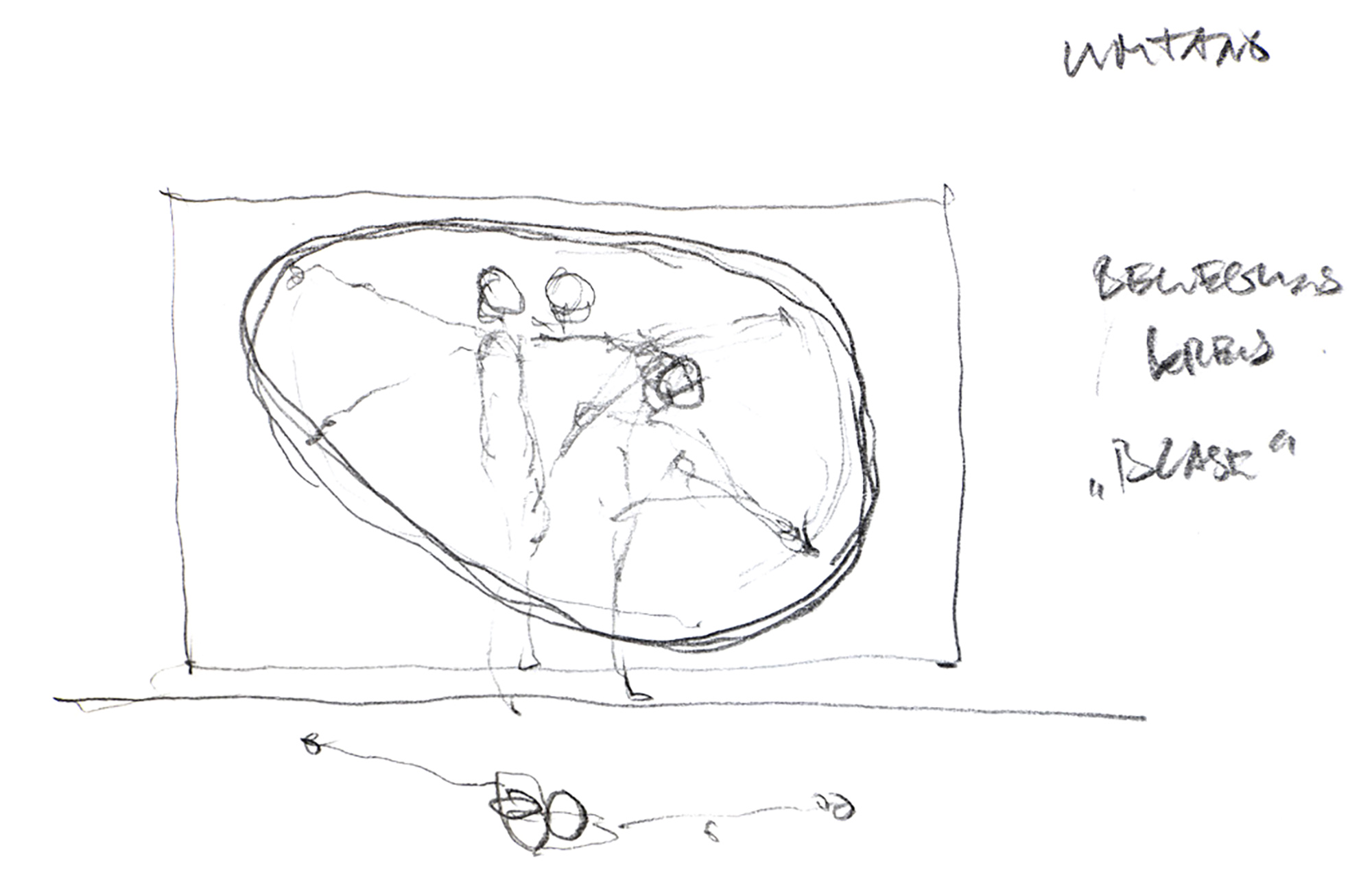

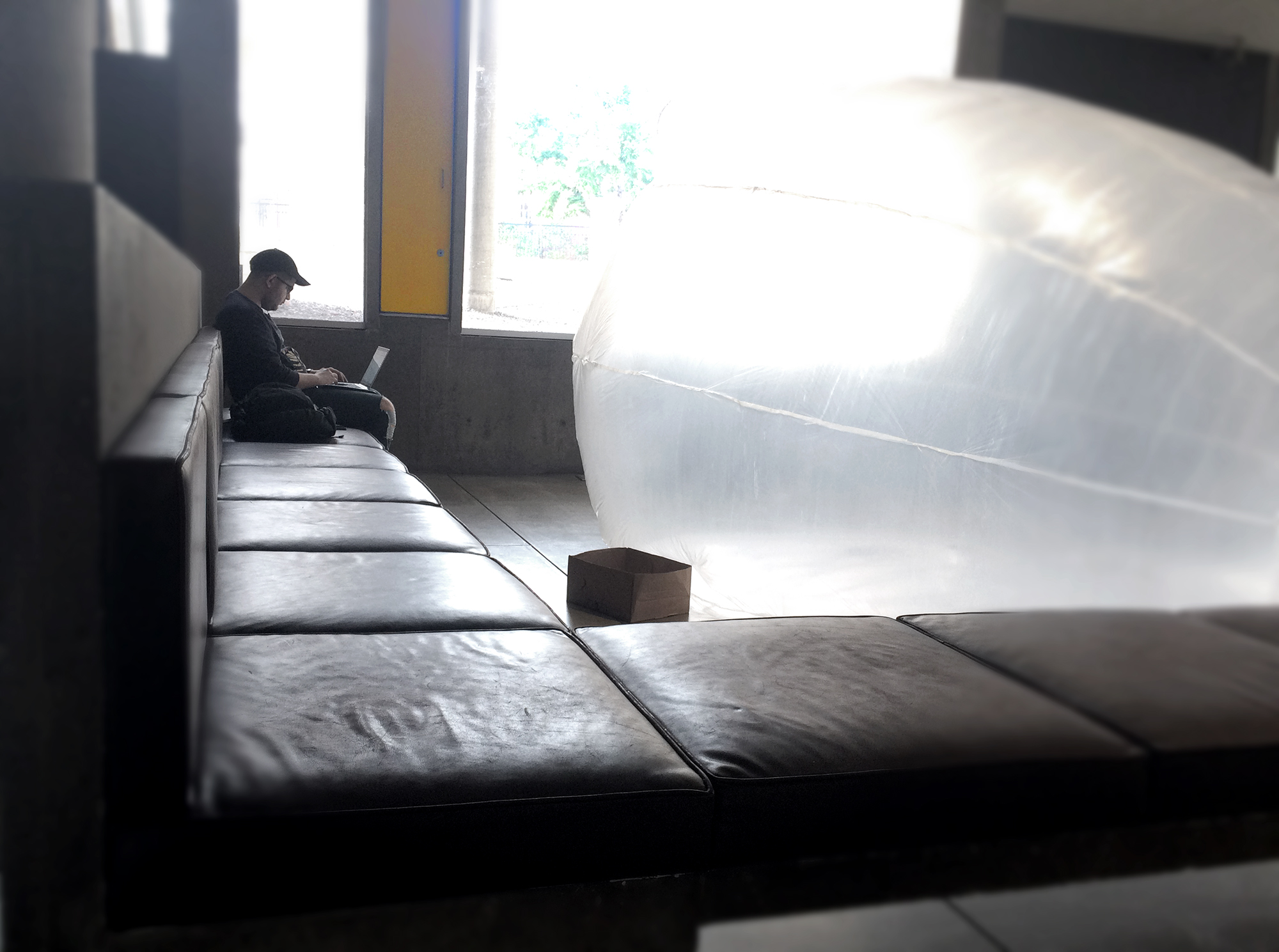

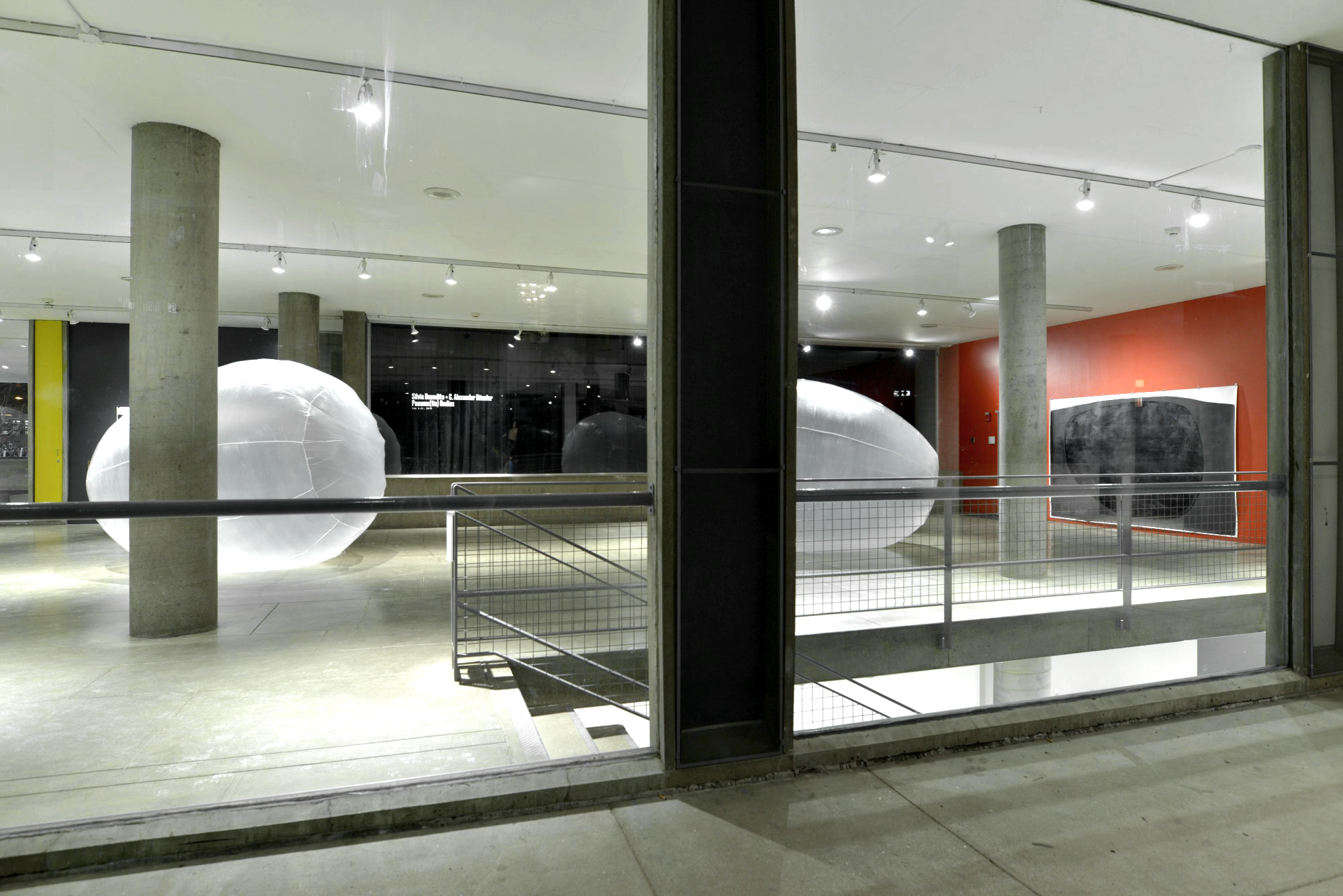

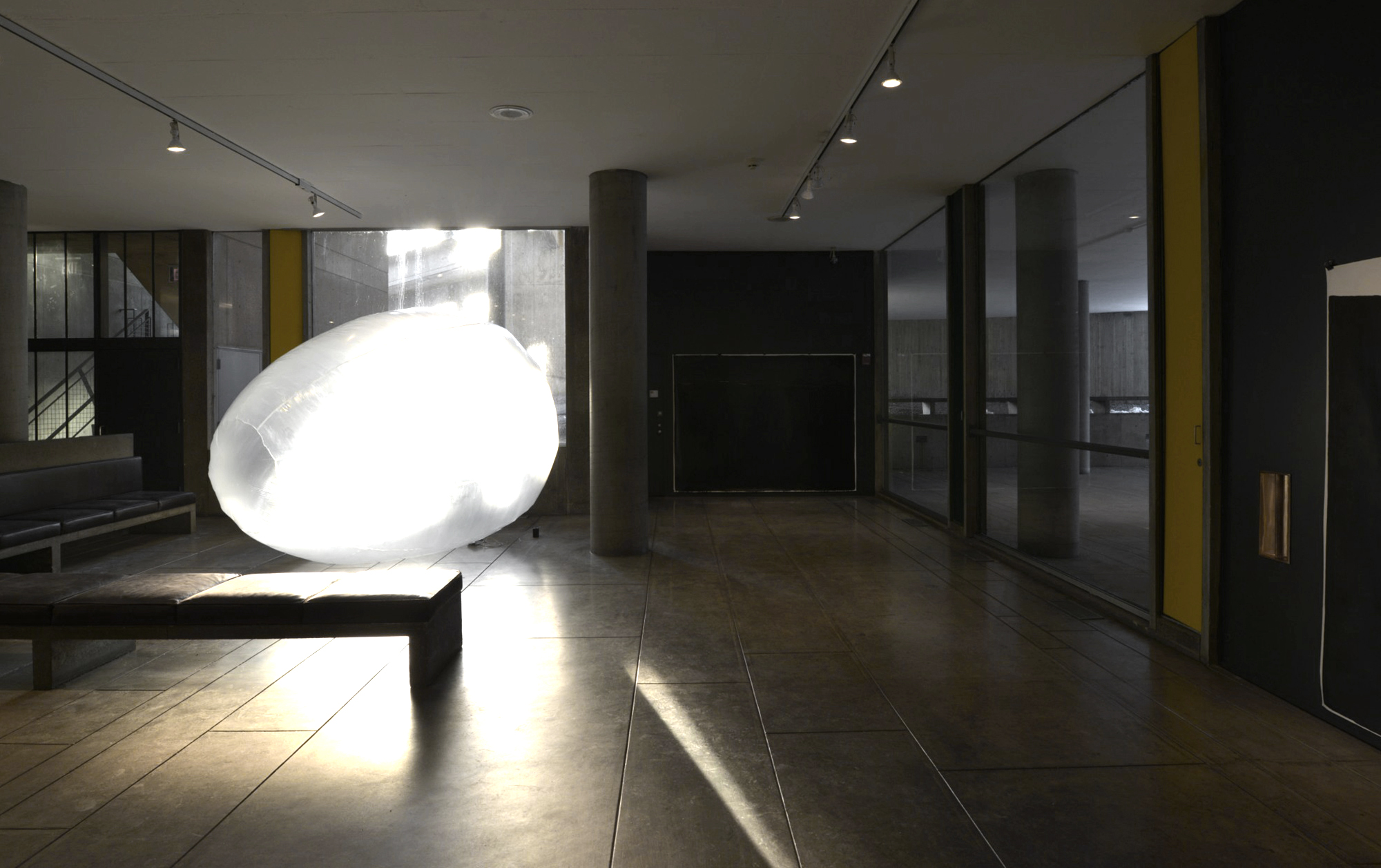

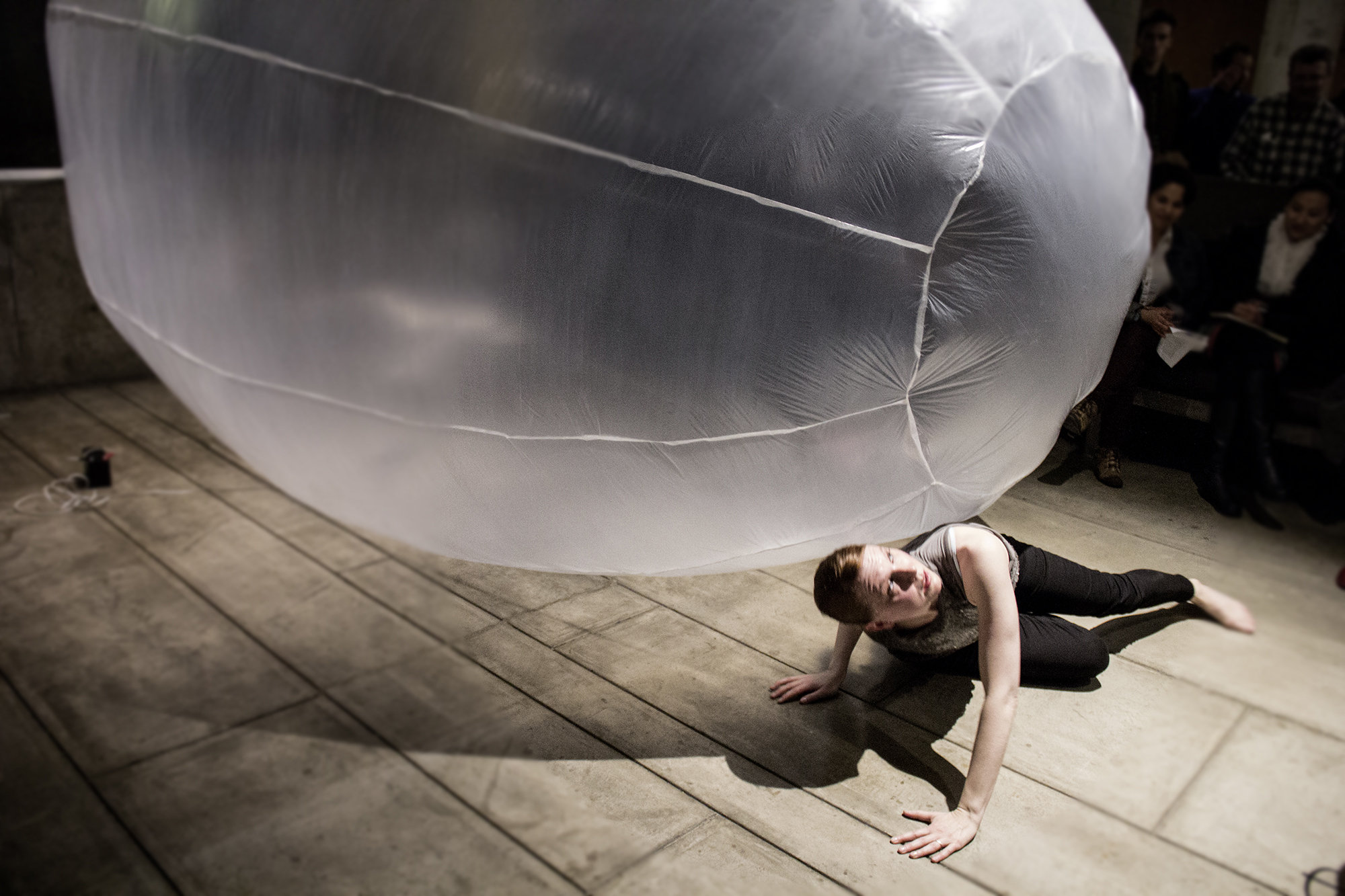

Pneuma(tic) Bodies zeigen die osmotischen Wechselwirkungen mit der umgebenden Luftbewegung und die Etymologie des Wortes -pneumatic- gleichzeitig Geist und Lebensatem. Die Zerbrechlichkeit dieser Körper, erinnert uns an unserer empfindliche Natur, enthüllt den Atem unserer Reichweite und die Dimension von uns in der Luft, als verkörperter Raum.
Pneuma(tic) Bodies register the osmotic exchanges with the surrounding air-environment and the etymologie of the word pneuma- simultaneously spirit and vital breath. The fragility of these bodies, while reminding us of our susceptible nature, reveals the breath of our reach and the dimensions of ourselves in the air as embodied space.
